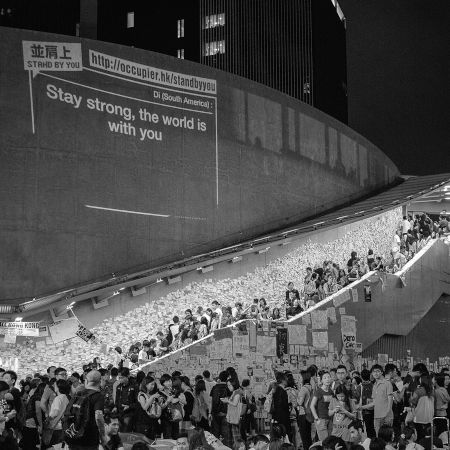Design /
Digital Storytelling
Making the media the message
The narratives created with digital media in media architecture play a key role in the entangled experience of mediated place. For the making of meaningful media experiences, digital storytelling (DST) presents a popular method. DST is a form of digital media production that enables personal narratives to be constructed, shared and digitally documented. While media artist Dana Atchley and Joe Lambert of StoryCenter are widely credited with the rise of DST, its popularity has surged due to the adaptation and appropriation of oral storytelling, where the radical and dynamic method of knowledge transmission has transcended to moving imagery, interactivity and non-linear storylines. DST is not as concerned with the sophistication of the imagery (such as in big budget movies) but places emphasis on the storyteller (what they choose to share and how they share it), as well as creativity in the production of the narratives. This allows for a range of storytellers beyond commercial filmmakers to tell personal, provocative and evocative stories.
Narrative, that is, when there is a clear beginning, a series of events and an ending to the story, is at the heart of DST. Narrative is a combination of description of the event(s) and providing the viewpoint of the narrator, as well as insight into the characters’ thoughts and feelings within the event. A common narrative template is the hero’s journey, where the hero goes through an adventure, comes to a crisis and then victoriously resolves the crisis (think Lord of the Rings!). Once a narrative has been identified, there are three key components of DST for media architecture: (1) the process of bringing the narrative to life through media architecture, i.e. ascertaining what media will support the narrative best, deciding how it will be created and gaining an understanding of the delivery environment; (2) the mediator i.e. individuals and teams who work in collaboration with the storyteller to sequence and create the media for digital displays, projections and mixed reality environments; and (3) the eventual digital media, which will include but not be limited to audio, video, text, GIF and images. The making of the media can be achieved through a range of tools, such as digital cameras, voice recorders, 3D software and virtual environment tools, such as Unity, Unreal Engine and smartphone apps. Due to this, DST offers a number of mediums, including digital videos, web-based stories, interactive stories and immersive experiences which include AR and VR, artistic installations and computer games.
Given that DST can involve difficult and sensitive subjects, such as human rights abuses, DST mediators often work towards reducing the risk of harm (such as vicarious trauma), insufficient attribution and compensation for storytellers and uninformed consent which can result in unethical making of stories. When care is taken in the making and displaying of DST, it can have emancipatory effects for the storyteller and audience, build empathy and raise collective consciousness on social issues. Further, the context of the media architecture needs to be understood, as it ranges from an experience on a mobile phone to large public digital screens. Thus, the mediator’s role in DST for media architecture needs to consider ethical dimensions, content curation, environment (public space, for example) and target audiences.
Method Steps
-
Brainstorm two or three ideas with a friend about the ‘story’ you want to create. Narrow this down to one idea.
-
Create a storyboard of your idea. The storyboard involves you creating a schematic of the important frames of your story, what is taking place and the setting in which it will be shot. You must also consider lighting props and any gear that you might need for the eventual shooting, such as a smartphone stand.
-
Shoot different scenes of your digital story as per your storyboard. Remember that the storyboard panel is a guide, and you can improvise as you go along.
-
Begin the editing stage once you finish shooting:
-
Check the footage.
-
Edit using your video editing app or software.
-
Be ready to shoot additional footage if necessary.
-
Consider adding special effects and music to add to the experience of your digital story.
-
Compile the digital story.
-
-
Project the digital story on a wall in your home using a projector.
